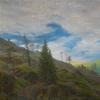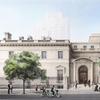2017 ISAMU NOGUCHI AWARD GOES TO ARCHITECTURAL DESIGNER JOHN PAWSON AND PAINTER HIROSHI SENJU
- NEW YORK, New York
- /
- April 04, 2017
The Noguchi Museum has selected John Pawson and Hiroshi Senju as recipients of the 2017 Isamu Noguchi Award, given to individuals who share Noguchi’s spirit of innovation, global consciousness, and commitment to East/West cultural exchange. The Award will be presented at the Museum’s annual benefit, on Tuesday, May 16, 2017.
John Pawson is an internationally acclaimed architectural designer based in London. His global travels have included four years in Japan, with time spent in the studio of designer Shiro Kuramata. Today, with projects that encompass buildings—from private houses to commercial showrooms, as well as art spaces, stage sets, a monastery, and yachts—Pawson’s work continues to grow out of the expressions of simplicity that have formed a consistent component of both Eastern and Western traditions, from Japanese concepts of Zen to Cistercian monastic architecture. In 2016 he completed his first major public project, the interior remodeling of the former Commonwealth Institute building in London, an iconic example of post-war British Modernism, now the new permanent home of the Design Museum in London.
Japanese-born painter Hiroshi Senju is noted worldwide for sublime, frequently monumental images of waterfalls and cliffs that combine a minimalist visual language that is rooted in Abstract Expressionism with ancient Japanese painting techniques. He is one of a handful of contemporary masters of the 1,000-year-old nihonga style of painting, using pigments made of minerals, ground stone, shell, and corals suspended in glue made of animal hide. Senju creates his waterfalls by pouring paint onto mulberry paper on board, conjuring not only the appearance of rushing water, but also its sound, smell, and feel. Senju was the first Asian artist to receive an Honorable Mention Award at the Venice Biennale (1995). His work is included in numerous international collections, including the Metropolitan Museum of Art and the Brooklyn Museum, in New York City; the Museum of Contemporary Art, Los Angeles; The National Museum of Art, Osaka, Japan; The Museum of Modern Art, Toyama, Japan; and the Yamatane Museum of Art, Tokyo, among others.

270x400_c.jpg)



10270x400_c.jpg)






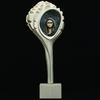
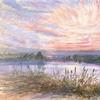
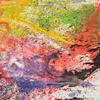

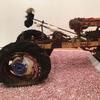

5100x100_c.jpg)
